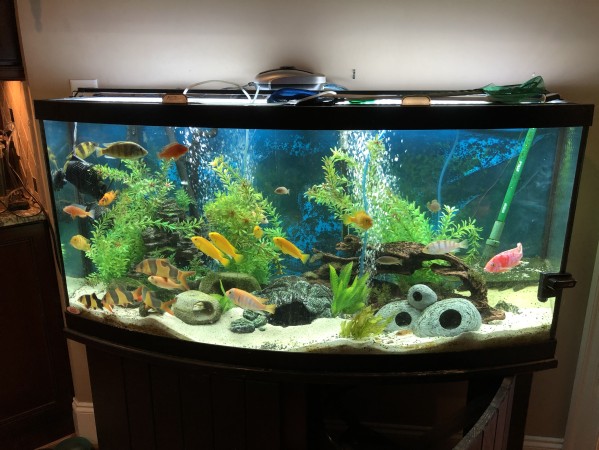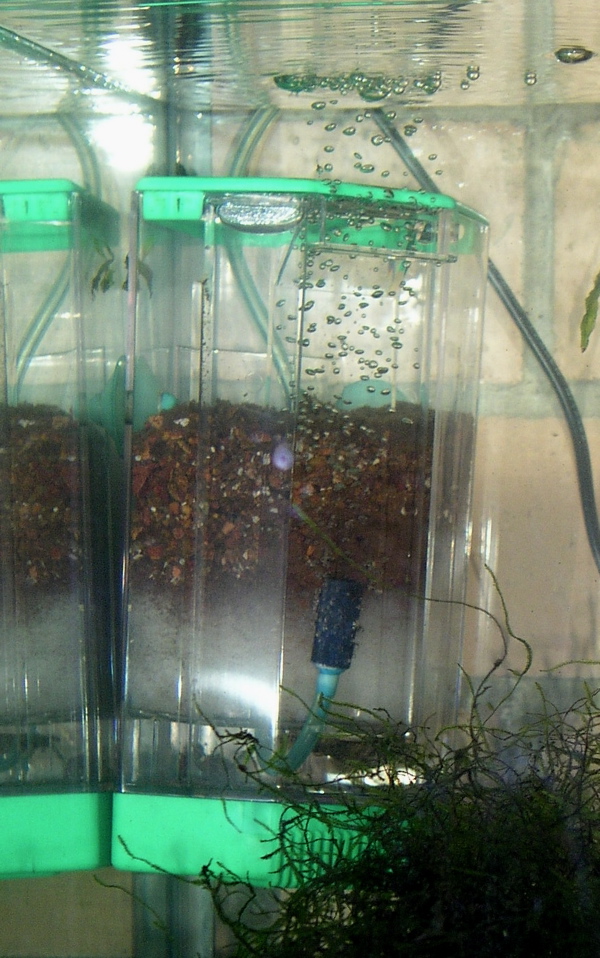How To Set Up An Aquarium
- Nov 06, 2021
- Rita
- 540 0 0

Are you thinking of becoming part of the aquarium world? Setting up and maintaining a fish tank can be great fun and an excellent hobby. If you’re a complete newbie, however, you might be a bit worried about getting it right. In this article, we’ll look at everything you need to know to start your first aquarium.
Let’s dive right in.
Decide What You Want To Do
Before you can start your aquarium, you’ll need to plan and decide what exactly you want to do. If you want a plant-only tank, you’ll need all the special equipment that goes along with that. If you’d rather focus on the fish, then you’ll have to decide which fish you want. You can also set up invertebrate tanks so the possibilities are nearly endless.
Make sure to do the proper research beforehand. Different species have different tank requirements. Some may need a very large tank with warm water, bright light, and good filtration while others prefer cold water, darkness, and a low flow.

No matter what you choose, make sure you know the following before getting any equipment:
- The minimum tank size requirement
- Habitat preference (plants, hiding spots, water clarity, etc.)
- Water temperature
- Water hardness (both GH and kH)
- Water pH preference
- Lighting requirements (very important in tanks with live plants)
- Substrate considerations
- Tank mate options
- Filtration requirements
Get A Tank
Once you know what kind of aquarium you’ll be going for, you can decide on a tank. Make sure to at least get a tank that is equal to the minimum requirement for the aquatic species you chose. This can vary from as little as 5 gallons to over 100 gallons. If you want to start small, choose the species you want to keep accordingly.
Keep in mind that you can never go too big. Bigger is always better, but you can definitely go too small. Tanks that are too small are cruel to the species kept in them and are very difficult to maintain. You will experience severe losses if your tank isn’t set up right so make sure to check the minimum space requirements before buying a tank.
Choose A Substrate
The next thing you’ll have to do is choose a suitable substrate. If you want a planted tank, you’ll need to choose a substrate that can support plant life. If not, you can choose between sand and a variety of gravel sizes. Just keep in mind that not all fish can be kept on all substrates.
Sometimes substrate can cause problems like impaction if ingested or even poison your fish due to bacterial growth under the surface.
Make sure to check what kind of substrate your tank will require and do some research on how to maintain it to prevent anaerobic bacteria from poisoning your tank.
Decide On Decor
You don’t need to add decor to your tank, but it does help to try and mimic the natural habitat of your chosen aquatic species. If you get it right, you won’t need to deal with health issues due to stress and suffer extra losses for no apparent reason. Here’s what you can add to a tank:

- Rocks
Rocks are great for creating hiding spots in your tank and also offer some mental stimulation. You can move the rocks around every now and then to keep the tank looking different as well.
Rocks can also be used as a medium to grow some plants on so don’t just discard them. Simply stack the rocks as you please and allow your aquarium critters to make a home under or on them.
- Driftwood
Driftwood is another way to add some texture to your aquarium. You can use it to create hiding spots or even just add some tunnels and other structures to swim through.
Driftwood looks natural and can be used to simulate a natural environment for some fish. You can also grow some kinds of plants on wood.
- Manmade decor
There are a variety of fake plants, and other plastic or silicone structures you can add to your tank. These are quite easy to keep clean but won’t help much with maintaining a healthy tank. They are simply for decoration and can be used to create some hiding spots for your aquarium critters.
- Plants
Plants are always a great choice for an aquarium as long as you are set up to care for them and have a species of fish that won’t destroy them. Plants will help to keep your aquarium water clean and will remove some fish waste from the water making it possible to do less maintenance.
Some fish like goldfish are terrible with plants, however. For these creatures, rather go with the artificial variety.
Set Up A Filtration System
It’s very important to have a filter in your tank unless you want to do daily maintenance. Filters allow beneficial bacteria to grow in their media which helps to keep your water quality pristine. They also help with adding oxygen to the water and removing floating particles.
Some fish and other critters can never be kept without a filter since they require lots of water movement to stay healthy. Make sure you know what you’re getting yourself into before buying a filter, however.
If you add a high flow filter to a tank with fish that prefer very slow-moving water, your fish will get stressed and die. For this reason, it’s very important to do the research before you buy.

CC BY-SA 2.5, https://en.wikipedia.org/w/index.php?curid=10400619
Think About The Water Temperature
Different species have different water temperature requirements. You will need to know what your chosen species prefer. For any tropical species, you will need a heater to keep the water at a constant, warm temperature.
For cold water species, normal room temperature should do the trick unless the temperature in your house constantly rises above 25 degrees. If you have a species that prefers very cold water, you will need a water chiller to keep them happy and alive.
Aquarium Water
Different aquatic species have different water parameters to keep them happy and healthy. The parameters will also differ between saltwater, brackish water, and freshwater tanks. Here are a few things you should pay attention to when it comes to the water in your tank:
- pH
Different species have different pH requirements. Some do well in acidic water while others prefer alkaline water. You’ll need to know what your chosen species prefer and keep to their chosen range if you want to keep them healthy and alive.
- GH
GH is the general hardness of your water. This refers to how much calcium and magnesium are present in the water. Some fish do very well in water with high concentrations of these minerals. This water is referred to as hard water.
Others might prefer soft water. This means that the water contains very low levels of these minerals. Make sure you know what your chosen species require. If the GH is wrong in your area, you might have to buy water for your tank.
- kH
kH is the carbonate hardness of your water. kH refers to how well your water maintains a fish safe environment. Essentially, this is the buffering agent in your water. Water with a high kH will keep a stable pH much easier than water with a low kH.
- Ammonia
Ammonia is produced by rotting fish food, dead plant material, and fish waste. This chemical is very poisonous to fish and should be broken down as soon as possible. This is done by beneficial bacteria in your filter media.
- Nitrite
Nitrite is a product of broken-down ammonia. This chemical is still very toxic to fish and requires further processing to make it relatively fish safe. This extra processing is also done by the beneficial bacteria in your tank and filter media.
- Nitrate
Nitrate is the result of nitrite being broken down. Nitrate is relatively safe in low concentrations and shouldn’t bother your fish if you do regular maintenance. If you have live plants in your tank, the nitrate will also serve and fertilizer and be removed from the water by the plants.
- Chlorine and other chemical content
It is very important to treat any water you plan to put into your tank. Not all water is fish safe after all. Tap water often contains heavy metals and chemicals such as chlorine. These can quickly kill your fish if not treated properly.
You can get special water conditioners that will bind these chemicals to make the water fish safe.
Cycling The Tank
Once your tank is completely set up and filled up, make sure to cycle it before you add any critters. Cycling the tank means adding a small amount of fish food to the aquarium and letting the filter run. There will be no creatures in your tank at this stage.
You’ll need to let the tank stand this way for at least a month to allow beneficial bacteria to grow in the substrate as well as in the filter media. This prepares your tank to be able to deal with ammonia and nitrate caused by fish waste.
If you don’t let the tank cycle, you will get ammonia and nitrate spikes that will very quickly kill any sensitive creatures in the aquarium.

Nitrogen cycle by J Wynia
Adding the fish
Once the tank has been cycled, you can finally add fish and other creatures. When you do get them, however, don’t just immediately release them into the tank. They will need some time to adjust to the new water conditions and the temperature in your tank.
You can do this by letting them float in the packets they came in. Every 10 minutes remove a cup of water from the packet and refill it with a cup of water from your tank. After about 40 minutes to an hour, you should be able to release your fish.
Don’t let any water from the packet into your tank. You might be introducing diseases this way. Rather capture the fish with a net and release them into the tank instead.
Final Thoughts
Now that you know how to set up a tank, it’s time to get started on your own. Just make sure to do the proper research before you go to buy everything you think you might need.
Happy fish keeping!






About author